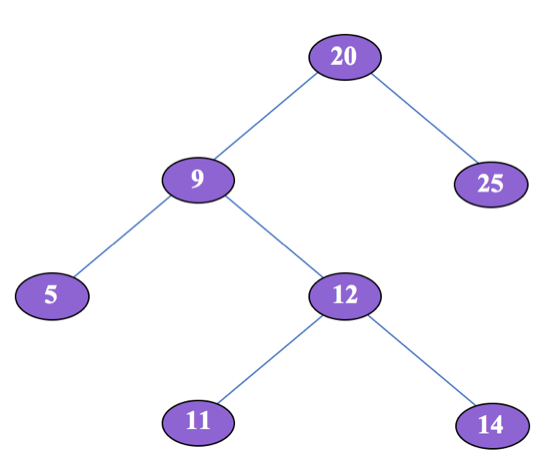Pramp – BST Successor Search
- 2022.02.07
- Pramp
Question
In a Binary Search Tree (BST), an Inorder Successor of a node is defined as the node with the smallest key greater than the key of the input node (see examples below). Given a node inputNode in a BST, you’re asked to write a function findInOrderSuccessor that returns the Inorder Successor of inputNode. If inputNode has no Inorder Successor, return null.
Explain your solution and analyze its time and space complexities.
Example

1. inputNode = 9, then Successor = 11 2. inputNode = 14, then Successor = 20 3. inputNode = 30, then Successor = None
Constraints
- [time limit] 5000ms
- [input] node
- [output] node
Solutions
- 如果 inputNode 有 right child
⇒ 一直往左走,直到:- right child rc.right = None ⇒ 回傳 rc
- right child rc.right < inputNode.key ⇒ 回傳 rc
- 如果 inputNode 沒有 rightchild
⇒ 一直往上走,直到:- 沒有更多 parent
- 某個 parent p.key > inputNode.key ⇒ 回傳 p
Time Complexity: O(size of)
Space Complexity: O(1)
def find_in_order_successor(self, inputNode):
# inputNode has no right child
if inputNode.right is None:
cur = inputNode
# Keep going to parent
while cur:
cur = cur.parent
# While find some parent bigger than inputNode
if cur.key > inputNode.key:
return cur
# No more parent can be found
return None
# inputNode has right child
else:
cur = inputNode.right
while cur:
# Keep going left
# until no more left child
# or next left child is smaller than inputNode
if cur.left is None or cur.left.key < inputNode.key:
return cur
cur = cur.left
Last Updated on 2023/08/16 by A1go

